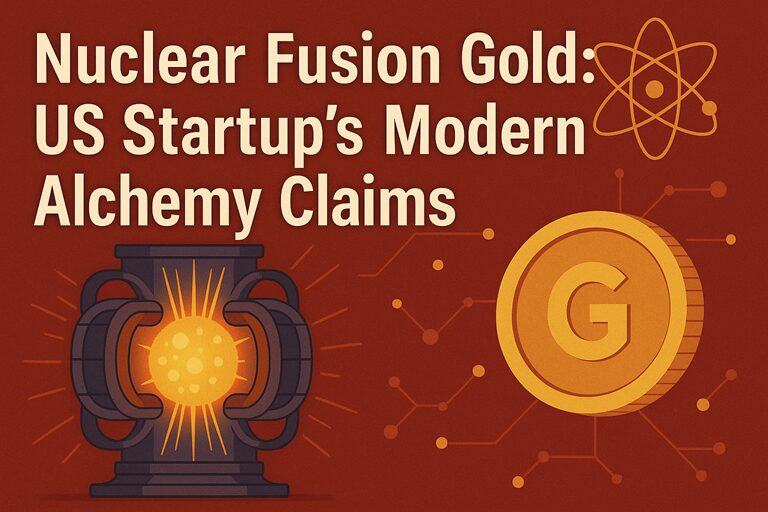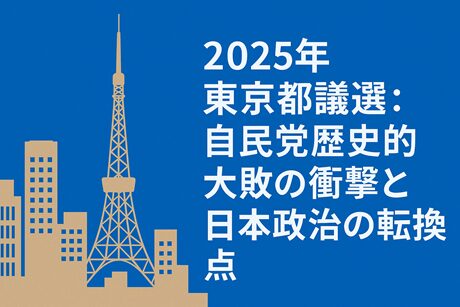目次
- 1 Nuclear Fusion Gold: US Startup’s Modern Alchemy Claims
- 1.1 What is Nuclear Fusion? Understanding the Mechanism and Current Progress
- 1.2 Mechanism of Mercury to Gold Transmutation
- 1.3 The “Three Walls” to Fusion Power Commercialization
- 1.4 Cost and Return of Gold Production
- 1.5 The Problem of Radioactive Impurities in Produced Gold
- 1.6 Japan’s Nuclear Transmutation Research Developments
- 1.7 Nuclear Transmutation for Radioactive Waste Resource Recovery
- 1.8 International Fusion Development Trends and Japan’s Strategy
- 1.9 Fusion Energy Advantages and Disadvantages
- 1.10 Conclusion: Possibilities and Limitations of Modern Alchemy
Nuclear Fusion Gold: US Startup’s Modern Alchemy Claims
The company claims their nuclear transmutation process can create gold in three days, with a 1-megawatt fusion reactor capable of producing 5 tons of gold annually as a byproduct. The Financial Times reported that adding gold sales as a revenue stream could make fusion power profitable even at lower electricity prices, potentially opening markets previously considered economically unviable.
Expert Skepticism
Shinichi Aoki, editorial writer at Nikkei, commented: “This paper hasn’t undergone peer review and isn’t credible. It’s likely exaggerated advertising.” Online discussions point out that the produced gold may contain unstable radioactive isotopes.
What is Nuclear Fusion? Understanding the Mechanism and Current Progress
Nuclear fusion is the phenomenon where light atomic nuclei merge to form heavier nuclei, releasing enormous energy – the same principle that powers the sun and stars. This is why it’s called an “artificial sun” or “sun on Earth.”
Basic Principles and Fuel of Nuclear Fusion
Main fusion fuels:
- Deuterium (D): 33 grams per cubic meter of seawater
- Tritium (T): Produced from lithium (0.2g/m³ in seawater, 233 billion tons of resources)
1 gram of fuel produces energy equivalent to 8 tons of oil (compared to 1.8 tons from 1g of uranium)
Plasma Confinement Methods
| Method | Characteristics | Representative Devices |
|---|---|---|
| Magnetic Confinement | Uses powerful magnetic fields to levitate plasma away from reactor walls | Tokamak, Stellarator |
| Inertial Confinement | Uses high-power lasers to create ultra-high temperature and density conditions | NIF (USA) |
Progress in Energy Gain
Q-value (Energy Gain) Achievements
- December 2022: US NIF achieved Q>1 with laser fusion (1.5x input energy)
- ITER Project: Targeting operation in 2035, aiming for Q=10
- Commercial reactor goal: Q=30-50 required
Mechanism of Mercury to Gold Transmutation
To produce gold (atomic number 79) from mercury (atomic number 80), one proton must be removed from the mercury nucleus. Marathon Fusion’s announcement suggests using high-energy neutrons from fusion reactions to change atomic numbers through reactions like (n,p).
Past Example: CERN Particle Accelerator
- Produced gold (atomic number 79) from lead (atomic number 82)
- Production rate: Maximum 89,000 atoms per second, only 3 picograms per day
- Problem: The produced gold is radioactive and decays quickly
The “Three Walls” to Fusion Power Commercialization
1. Technical Challenges: Extreme Difficulty of Plasma Control
| Challenge | Details | Requirements |
|---|---|---|
| Plasma Control | Precise control of ultra-fast moving plasma | Extended energy confinement time (τ) |
| Material Durability | Resistance to 150 million degree heat, neutron bombardment | Withstand ~900 dpa radiation levels |
| Impurity Control | Prevent reaction shutdown from tungsten contamination | Contamination tolerance 10^-4 to 10^-5 |
2. Enormous Construction and Development Costs
Cost Overview:
- ITER Project: Construction cost approximately $25 billion (experimental stage)
- Future commercial reactor: Estimated construction cost $4.9 billion
- Commercialization requirements: 30+ year lifespan, 30%+ thermal efficiency
3. Human Resource Development Challenge
Japan faces a severe shortage of fusion specialists, with Japanese staff comprising only about 3% of ITER personnel. Declining university fusion research programs and doctoral enrollment rates pose additional challenges.
Cost and Return of Gold Production
Economic Reality
- Production cost: Tens of thousands of dollars to produce $1 worth of gold
- Annual production: 5 tons (comparable to Japan’s 6-ton annual gold output)
- Prerequisite: Requires a 1-megawatt fusion reactor
If such a fusion reactor could operate stably, solving energy problems would have far greater value than gold production.
The Problem of Radioactive Impurities in Produced Gold
Radioactive Isotope Issues
Natural mercury contains isotopes other than 198Hg, causing these problems under neutron bombardment:
- Production of radioactive isotopes like gold-195 (half-life ~186 days)
- Requires 13-18 year cooling period to reach safe levels
- Major barrier to commercial use
Japan’s Nuclear Transmutation Research Developments
Cold Fusion and Palladium Membrane Transmutation
Mitsubishi Heavy Industries’ Breakthrough Experiments
Without using nuclear fission, fusion, or accelerators, simply passing deuterium gas through palladium membranes achieves these transmutations:
- Cesium → Praseodymium (material for praseodymium magnets)
- Tungsten → Platinum
- Barium → Samarium
- Strontium → Molybdenum
However, production amounts are only micrograms.
Other Research Institution Initiatives
| Institution | Research Focus | Results/Goals |
|---|---|---|
| Toyota | Transmutation for fuel cell platinum | Successful experiments, approaching industrialization |
| RIKEN | Transmutation measurements using SPring-8 | Observed cesium to praseodymium conversion |
| Tohoku University | Clean energy via condensed matter nuclear reactions | Nuclear waste decontamination research project |
| Tokyo City University | Reactor alchemy project | Mercury to gold production demonstration research |
Nuclear Transmutation for Radioactive Waste Resource Recovery
Japan’s radioactive waste status and goals:
- Current: Approximately 24,800 vitrified waste containers
- Final estimate: 40,000 containers
- Goal: Reduce high-level waste by 90%
- LLFP and MA transmutation could significantly reduce radioactivity within 1,000 years
Recovery and Reuse of Valuable Elements
Valuable elements in high-level radioactive waste:
- Palladium: Automotive catalytic converters (clearance level: ~3,000 becquerels/gram)
- Zirconium: Reactor materials, ceramics
International Fusion Development Trends and Japan’s Strategy
| Country/Region | Commercialization Target | Characteristics |
|---|---|---|
| China | 2030s | Most aggressive timeline |
| US/UK | 2040s | Private investment over $8 billion |
| EU/Korea | 2050s | Steady development approach |
| Japan | 2030s demonstration 2045 power generation | Fusion Energy Innovation Strategy |
Fusion Energy Advantages and Disadvantages
Advantages
- Inexhaustible fuel: Virtually unlimited supply from seawater
- High safety: No runaway reactions, radiation risk 1/1,000 of fission reactors
- Environmental compatibility: Zero CO2 emissions, no high-level radioactive waste
Disadvantages/Challenges
- Technical difficulty: Researched since 1920s, still not commercialized after ~100 years
- Enormous costs: ITER construction $25 billion, commercial reactor $4.9 billion
- Tritium management: Requires strict control of radioactive material
Conclusion: Possibilities and Limitations of Modern Alchemy
While the announcement of gold production through fusion is attention-grabbing, its realization faces the major hurdle of commercializing fusion power itself. Marathon Fusion’s claimed 5-ton annual gold production, though technically interesting, appears unrealistic for these reasons:
- Economic issues: Tens of thousands of dollars to produce $1 worth of gold
- Radioactive isotopes: Requires 18-year cooling period
- Priorities: A 1-megawatt fusion reactor should prioritize solving energy problems
Fusion energy and nuclear transmutation represent technologies that could realize humanity’s fundamental dreams of “infinite energy” and “infinite resources.” While these technologies still face many difficult hurdles, steady progress is evident in:
- High-temperature plasma control technology improvements
- Extreme environment material development
- Tritium fuel cycle system establishment
- Remote maintenance technology evolution
- Accelerating private investment (over $8 billion)
- Deepening international cooperation
Just as ancient alchemists’ dreams of creating gold are now being scientifically explored through mercury-to-gold fusion alchemy, scientific progress has consistently presented possibilities beyond human imagination. The combination of fusion energy and nuclear transmutation technologies, complementing each other’s challenges, offers hope for a “brilliant future” of sustainable energy and resource circulation.
This represents not merely technical progress but transformative changes for the global environment, economic structures, and society as a whole. The world watches with bated breath for these “modern alchemy” technologies to become reality.
Reference Links
- ITER (International Thermonuclear Experimental Reactor)
- MEXT Nuclear Fusion R&D (Japanese)
- National Institutes for Quantum Science and Technology
- National Institute for Fusion Science
- RIKEN
- Japan Atomic Energy Agency
- Tohoku University
- Lawrence Livermore National Laboratory
- UK Atomic Energy Authority
- CERN (European Organization for Nuclear Research)









Leave a Reply